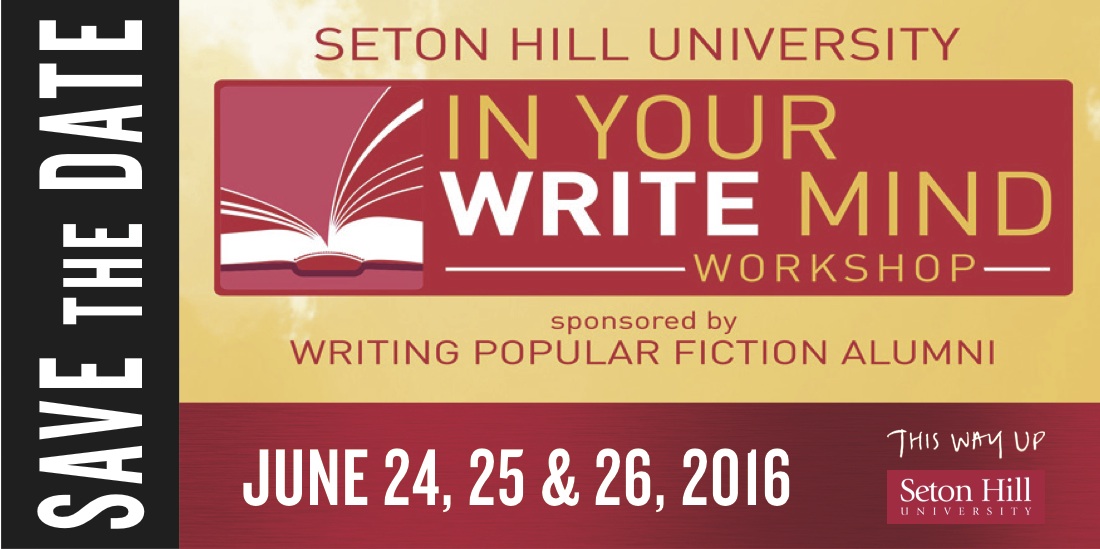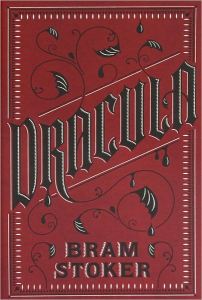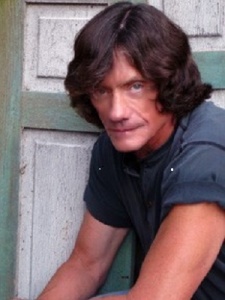
New Publication Alert: Serial Encounters
06 Mar 2024 Leave a comment

My Screenwriting Journey: Examining Book to Screen Projects
31 Jan 2024 Leave a comment
in Uncategorized Tags: fiction, movies, screenplay, screenwriting, writing
Recently, I’ve expanded my writing journey from genre fiction for publication to screenwriting. I’ve been watching books to TV and film projects in hopes of unpacking the characterization in print form to screenplay format.
Being a speculative fiction writer, I’ve chosen to examine Stephen King’s books to film, Vampire Diaries, True Blood, and obviously I’ll expand into literary fiction to film projects eventually. I’m picking the low-hanging fruit first so that I don’t mire myself in symbolism and other literary devices.
The aforementioned content has enjoyed a second life on streaming recently and confirmed that even the current generation finds pleasure in popular (genre) fiction. Final Girl Jamie Lee Curtis winning an Oscar for Best Supporting Actress in 2023 was actually a celebration of genre films and fiction. I’m sure I am not alone in that sentiment, but I digress.
When you’re writing a story, you get to build your world in solitude, and only after you’ve completed your first and sometimes second draft, you come up for air and ask your community, “Is this ready for submission?” It’s a sensitive early stage of creation that you eventually grow thick skin to handle rejections early on in your writing career, but the collaborative nature isn’t nearly as dynamic as TV and film production. You’re either accepted or rejected and if you’re accepted, you’re only responsible for addressing the editor’s notes and promotion of your work after publication.
I’ve brought my fiction writing skillset over to the screenwriting ideation process: brainstorming, outlining, and drafting the manuscript. My ideas almost always come from dreams that are like little films in my mind while I slumber. Then I’m ready to pluck the idea and set my mind to shaping the idea into a story that readers might enjoy.
Going through this process, I’m finding that screenwriting requires the ability to set up characters, conflict, context, and tone to tell a story in a visual and efficient way. It’s not all that different from writing a manuscript, but there’s not a lot of room for description. You’ve got to provide minimal direction to set up a scene to empower the production team with the opportunity to interpret the words on the pages. You have to give up creative control (tough for a fiction writer!) after you’ve delivered the script to the production team so that they can make the best possible creative choices.
One of the things that I’m so impressed by throughout this examination is how everyone from the director, screenwriters, production designers, and actors all come together to execute a vision for a movie or TV series. Sometimes with books to film, the final screenwriter(s) and production team take creative license to make changes that might upset book fans, while trying to deliver engaging content that keeps the viewer watching.
I wrote an unpublished fiction novel that I can’t wait to tackle as a TV or film script, but for some reason, I’ve held off on starting the process. I feel like I’ll relive the critique sessions in my head and the reimaging of characters, and I wonder if I’ll ruin the process or my own vision of my novel for the screen.
As a fan of my own work, will I disappoint myself? Maybe. But I realize that it’s nonsense to doubt myself because the material is already there. Going through the process of looking at books to TV/film has opened my eyes to just how much of a collaborative effort a production requires of all involved to have a unified vision. I’m deep in the writing stage of my first project and I’m loving it!
Share in the comments if you’ve recently tried your hand at writing for the screen.
A New Story in Print!
30 Nov 2023 2 Comments
in fiction Tags: creative writing, fiction, genre fiction, horror

My story “Delphine the Hag” is published in CultureCult Magazine’s horror anthology, “Memento Mori: Rest in Peace.” While this is not my first story to be published, it is the first one in print!
Please support my writing career and purchase a print copy today. Send the copy to me, and I’ll sign it and ship it back to you. Purchase a print copy here.

3 Ways to Keep Spooky Season Alive
12 Nov 2023 Leave a comment
Just because Halloween is over, it doesn’t mean you have to wait until next year to extend spooky season.
Here are 3 things you can do to keep Spooky season alive:
- Put a spooky spin on Christmas by watching these flix:
- Gremlins (1984): A young man receives an adorable pet for Christmas only to find out that it spawns mischievous creatures who wreak havoc on his small town.
- A Nightmare Before Christmas (1993, Disney+): Who doesn’t love a Tim Burton film, marrying the comedy horror genre with your favorite winter holiday.
- Krampus (2015): No, Krampus doesn’t just deliver a lump of coal to naughty boys and girls in this film, he’s coming for the dysfunctional Engel family in a bloody fight to survive the night.
- Black Christmas (2019, Netflix): This remake puts a feminist spin on the holiday classic film of the same name to tackle the problematic college culture of Greek life on campus.
- Violent Night (2022, Amazon Prime): Stranger Things’ favorite David Harbour plays Santa Claus in this ultra-violent Christmas film.
- Watch these modern-day adaptations of your favorite childhood scary story series by R.L. Stine:
- The Fear Street film series (2021, Netflix): Set in a 1990s backdrop and going back as far as the 1600s, the three-part film follows teens from “the wrong side of the track” who stumble upon a curse that must be broken to save their small town.
- Goosebumps TV series (2023, Hulu & Disney+): I know, I know, you’re thinking of the bubblegum-flavored Goosebumps of your childhood. This series has been spiced up to engage both youth and adult audiences. There are enough thrills to keep you smiling at your TV and waiting for the next episode to stream.
- Prefer to read your scary stories in print? Check out my stories in the following anthologies:
- Short story “Delphine the Hag” in the Memento Mori: Rest in Peace anthology (CultureCult Press, Nov. 2023)
- Short story in The Sirens Call eZine, “The Babysitter” (Issue #63 Halloween edition, Oct. 2023)
Looking For a Genre Fiction Workshop?
18 May 2016 Leave a comment
in Uncategorized Tags: #amwriting, conference, creative writing, genre, genre fiction, workshop, writers conference, writing, writing workshop
- Guest Agent Kimberly Brower, The Rebecca Friedman Literary Agency
-
Guest Agent Eric Ruben, The Ruben Agency
-
Guest Editor Diana M. Pho, Tor Books
-
Guest Author Daniel José Older
The special guests will be available for pitch sessions, lead workshops and participate on a panel discussion for Q&A about the publishing world.
The workshop planners are hosting social events after the daily program, including a book signing and reading, and a wine social where workshop attendees are free to dress up in “Trope Your Genre”-themed costumes.
Register today at: https://alumni.setonhill.edu/wpf2016

Book Review: Bram Stoker’s Dracula
01 Nov 2015 Leave a comment
in Uncategorized Tags: Dracula, fiction, horror, reviews, vampires
In the spirit of Halloween weekend, here’s my review of Bram Stoker’s Dracula.
The level of research and detail that went into Stoker’s portrayal of Count Dracula (aka Vlad the Impaler) took several years and it shows. Stoker’s contemporaries, and a few predecessors, had written vampire novels with its own spin, but none were as popular as his. First of all, the story is written as a collection of letters, audio recordings, memos and diary entries giving the reader the vantage point of several characters: Mina, Lucy, Jonathan Harker, Dr. John Seward, and in some small degree, the infamous Dr. Van Helsing. Although I suspect Van Helsing’s character lacked a diary because Stoker probably thought being described through the eyes of his more passive characters added to the mystique of Van Helsing.
and it shows. Stoker’s contemporaries, and a few predecessors, had written vampire novels with its own spin, but none were as popular as his. First of all, the story is written as a collection of letters, audio recordings, memos and diary entries giving the reader the vantage point of several characters: Mina, Lucy, Jonathan Harker, Dr. John Seward, and in some small degree, the infamous Dr. Van Helsing. Although I suspect Van Helsing’s character lacked a diary because Stoker probably thought being described through the eyes of his more passive characters added to the mystique of Van Helsing.
Dracula starts out with young Jonathan Harker being invited by the Count to his Castle in Transylvania to be his solicitor (lawyer), and to help him with purchasing property in England. At first the Count is most gracious and spends hours with Jonathan talking to him about his home country. The Count appears as an old aristocratic man who is interested in one last adventure outside of his home country, but later the reader discovers, through Jonathan, that “the old man has grown young!” Unfortunately for Jonathan, things take a turn for the strange when he realizes that all of the doors in the castle are locked, and he is restricted to his bedroom. Jonathan protests and threatens to leave the castle in the middle of the night, but realizes that the pack of wild wolves that howled every night outside the castle were controlled by the Count.
That brings us to Lucy and Mina, Jonathan’s fiancé back in the United Kingdom, who he tries desperately to get a correspondence to once he realizes he is a prisoner in the Count’s castle. Mina and Lucy are ladies-in-waiting. Mina had already been betrothed to Jonathan Harker before his trip east and Lucy, a fiery redhead, is promised to Arthur, but has two other engagement offers from Quincy and Dr. Seward. This completes the full circle of friends and love quadrangles that drive the “B Story” of Dracula. If it weren’t for these people who were loosely tied together by the two women and Dracula, then there wouldn’t be a Van Helsing to speak of.
It is wonderful to see how Stoker weaves these stories together to bring us to the ultimate climax. Interspersed throughout the story is the teased romance (ah ha! This is when chivalry was alive and well), and the strong female voices of Mina and Lucy, was the imminent threat that is Count Dracula who slowly makes his way to London with the intent to stalk the city and feed. Jonathan Harker knows this and leaves the reader on the edge of their seat wondering how they’ll make it back to London to warn everyone of Dracula’s evil plot! Oh, but that’s when one more brief letter to Mina by way of a Romanian nun (oh what surprises the letters hold!) about Jonathan’s terrible “condition” and that she is to come to him at once and be married.
Here’s where the “B story” takes a turn. One of the very important and central characters is infected, but you get insight into the turning through the character’s diary. Dots are connected and the fantastic world of London is turned upside down when all of the characters converge to track down and kill Dracula before he infects anymore. Throw in some choice settings like Dr. Seward’s insane asylum as a “safe haven” for Mina, and creepy graveyards and you’ve got a perfect picture of Gothic London.
It has been more than one hundred years since the initial printing of Dracula in 1897, and the book is still a classic. It has inspired so many vampire spin-off movies and television shows, created a foundation for bestselling authors like Anne Rice and Stephanie Meyer, and gone through several scholarly reviews. It is very rare that genre fiction stands the test of time, but when it does, it’s not because the conventions lasted, it’s because the writing was above average, and the story itself was unmatched.
Stoker’s mastery of story structure — flashing between POV characters via diary entries, letters, memos and newspaper clippings — was flawless. For the reader, the story was like a case that needed to be solved. Yes, yes, the reader knows how the story ends, but they still don’t know how. It’s an emotional roller coaster ride with each character as the reader puts some of the puzzle pieces together. Even though the reader knows that some characters have the answers to the questions in one character’s head, the reader is still waiting to see when they’d find out where the puzzle piece fits: who is talking to the man, Renfield, in the insane asylum? Who is his “master”? Yes, the reader knows it’s Count Dracula in the form of a mist or a pack of rats, but do we know why Renfield eats insects, wants a cat, or knows details about Mina that he shouldn’t know? Hmm….
This is the joy of reading Dracula one hundred years later. It is like unraveling the mystery of the early genre writer and reexamining the beloved horror story to discover insights into the makeup of a bestseller. Stoker will forever stand tall in the hall of both genre and literary fiction.
Choosing Your Genre
18 Feb 2015 1 Comment
When you first make the decision to write, sometimes you have to think long and hard about whether you want to write what you like to read or write what comes natural to you. Read Ron Shannon’s guest blog post on choosing your genre for his perspective. Ron and I both attended Seton Hill University’s Writing Popular Fiction program, so I’m delighted that he had the time to contribute to my blog. Enjoy and please comment below! His novel The Hedgerows in June is on sale on Amazon.com.
Someone once said you don’t choose your genre, it chooses you. Who said it? Does anyone know? Please tell me.
When asked about my genre I want to say action/adventure. You know, characters embarking on perilous journeys. Questioning their motives, their courage or the desires that make them risk their lives for a promise, a cause, or a loyalty with questionable reward. Action results from the adventure. Events occur in rapid sequences with danger no one could possibly predict, but are consequential to the expedition.
What about romance carefully written to include the required elements of the genre? The love story must be so important that it doesn’t require anything other than the characters’ full knowledge of its existence. I’m convinced such things are part of the human existence, the basis of what creates dreams and fantasies. No, not just for the sexual aspect of a love story. It’s about the fulfillment of our lives and the need, the requirement to share our experiences, our victories and our defeats. When we are faced with challenges and inevitable horror we seek that certain someone waiting for us no matter what qualities or faults we demonstrate.
But I got carried away. The goal is to write adventure, action and romance that powerful. Yet I can’t deny another component. I write outside the contemporary timeframe. Not the future. That is better suited for those who write speculatively, writers who build worlds and predict the product of shortsighted leadership, authors with the imagination to see things as they are and ponder the unconscionable outcome. No, I don’t write such things. Instead, I write about the past. Not the distant past, but stories set in the twentieth century. Well, for the most part I do. I am in the process of writing a story situated in June of 1876. Yeah, I guess you can call it a Western although when I wrote the first draft I wanted to make it more than a Western. I wanted to make it about the character’s journey toward the identification of his true nature. Something I strive for in all of my work, but that is more about theme than genre and I am going off on a tangent.
I’ve taken the long way around to get to the point. The factor that continues to show up in my work is history. When I first thought about my novel The Hedgerows of June I didn’t consider the connection to historical fiction. I knew I wanted to place the story in World War II. I wanted a time conducive to the creation of one challenge after another. I wanted it to be interesting and heartfelt. Getting to World War II and specifically The Battle of the Hedgerows meant answering a series of “what if” questions.
The story started with a writing prompt that went something like: Someone is about to go on an ill-advised journey. Why would the trip be unwise? It had to be personal, but something told me place and time were key. I imagined a man in the woods with a group of young children he had to get safely to a dangerous destination. He needed help. For some reason a nun seemed likely. Not only should the destination be dangerous, but also the journey. What if it’s during a war? I’ll never be able to explain why I immediately thought of Nazi tanks, German soldiers and the American Army. Oh, and the man realizes he’s falling in love with the nun.
Notice how the history ingredient found me? I could’ve made it during a zombie apocalypse. A trip in outer space could’ve been another option. What about an inner city school? Instead I decided to put the story inside one of the bloodiest battles of World War II, The Battle of the Hedgerows and The Battle of Saint Lô that came immediately afterward.
So why am I so reluctant to say my work is historical fiction? Perhaps because what I wrote is not what I consider to be true historical fiction. I wrote about characters I developed to live during a real time in history. I made up the challenges they experience. The story is my creation. The events I describe never happened except in my story. True historical fiction, at least to me, is totally different. To me historical fiction is not only about a real time in history, it is also about real characters of the period. The characters are usually, but not always, the people creating the history. What makes it fiction is how the writer fills in the blanks. There are real documented events. The historical fiction writer imagines what happened during the time that’s not documented and he or she will make it difficult to distinguish between truth and invention. The reader enters into it with that understanding. There are some great writers who do this very well. For instance Sharon Kay Penman writes about England in the twelfth and thirteenth century. A fellow student at Seton Hill, Dawn Gartelhner, also writes historical fiction.
Although historically based, The Hedgerows of June did not follow the recorded time line. It did describe the conditions, the environment and the state of the armies on both sides. The characters are caught in the middle. They must get to Saint Lô. The lives of the children depend on it.
So there it is. I am not writing about real people in a real time period. I am writing about fictional people in a real time period. The events are fictional, but the surroundings are as close to real as I can make them. I am apt to say my genre is action adventure with strong romantic tendencies. I am reluctant to call it historical fiction, but please call it historical fiction if you want. My publisher does.
About Ron
Ron Shannon discovered a passion for storytelling at a very young age: while listening to his teacher read the Charles Dickens’ classic A Christmas Carol to the overly-excited members of his sixth grade class. Later, he went on to study at Rutgers University in New Brunswick, New Jersey and graduated with the unlikely degree combinations of accounting and English. Recently he completed his Master of Fine Arts in Writing Popular Fiction at Seton Hill University in Greensburg, Pennsylvania. Ron lives, daydreams, and writes at the New Jersey shore.
International cultural connections series: Research your story beyond the Internet
02 Feb 2015 Leave a comment
I’ve traveled to more than 20 countries (some more than once) and lived in Japan for two years. When I visited most of those countries, I either knew people there who could show me around or was on an educational program. For about two or three countries, I cheated and went on a tour. (One of the countries was in the Middle East and too complex to understand and get around without language and deep cultural understanding.)
There are many people who have traveled around the world and have “cheated” and took tours. When you travel on tours you barely scratch the surface of that country’s culture. On these tours you are escorted around and herded like little sheep and you barely have time to negotiate prices in the local language or try something completely new by accident like street food or an awesome little shop where you can buy goods not found online.
In this series of blog posts, I challenge you to explore the culture around you every day and to try your best to travel overseas and engage with “the locals.” Not only is this food for the soul and a heck of a good way to find writing inspiration, but I promise you the experience will set you free and allow you to open up to nuances of cultural interaction that you may have never noticed before. So many of my experiences traveling overseas and getting to know other cultures have influenced me as a science fiction and fantasy writer. There is a whole world out there that is waiting to be explored by you in your own unique way and if you’re a writer, the experience will leave a permanent imprint on you (for good or bad).
I live near a very multicultural city so anytime I want to “travel the world,” I can search for local event listings and find an event (Salsa, African drumming or Japanese tea ceremony anyone?). There are many ways to reach cultures you never knew existed near your “small town.” There’s a social networking site called Meetup.com. You can use the site to either start your own culture or travel “meetup” or join someone else’s. Universities are often a hotbed of intercultural activity and often host many international students. Get to know some students there. Imagine how happy they’d be to share their culture with you! No matter whether you write genre or literary fiction, you will be inspired and the stories you tell will come across more authentic for having done the hands-on research.
I live in the midwest and there are only black and white people here.
So. That’s a terrible reason not to get to know another culture. Perhaps there’s an immigrant black or white family in that group. Have you ever considered that?
I live in Texas and my only neighbors are the tumbleweed.
No excuse. You’re too close to the Mexican border and you’re probably not far from an enclave of Mexican or Mexican-American families.
There are also study abroad programs many colleges and community colleges operate that might give you the opportunity to study abroad if you’re in college. I also just recently learned about the Road Scholar program. Yes, it’s cheating, you’d be going on a tour, but at least it’s educational. My personal favorite tour company is Gate1Travel (very affordable). If you take that route, finds ways to go off the beaten path after your itinerary ends and interact with the locals, even if it’s just to talk to a shopkeeper.
This invitation to travel post is the first in the international cultural connections © series. Please drop a line in the comments section and let me know about your travel adventures and how you’ve used it in writing. Also feel free to ask me questions about how to travel around the world on a budget. Trust me, I’ve done it and I’m not rich! I am rich in experiences though.
Congratulations, you are now a Master of Fine Arts. Now go forth and write!
16 Jan 2015 Leave a comment
So it’s official, I’m a master of fine arts now. I never thought I’d be the master of anything. In fact I’ve always claimed the following: “Jack of all trades, the master of none.” The day that my cohorts and I in the Seton Hill University’s Master of Fine Arts (MFA) program had all been waiting for has come and gone. Two days later and we’re still sharing pictures on Facebook and patting each other on the back.
But slowly we are realizing that now we have no excuse for not submitting our work. We were all required to complete a genre novel to satisfy our thesis requirement so we have work to submit. Is it the daunting task of finding an agent or is it the fear that the rejection letters will start rolling in? I think it’s a little of both.
I don’t want to discourage anyone from taking the plunge and traveling down “the road not taken” (see Robert Frost). I actually want you to follow your passion. Whether you think you want to use your degree as an opportunity to finally focus on your writing or if you’ll also use the degree to find other careers in the publishing industry.
Why would anyone want to get a master of fine arts degree in creative writing (or for me, Writing Popular Fiction)? Some students in our program had full-time jobs in completely respectable industries (not related to creative writing). Some were bestselling-authors who wanted a terminal degree, some were full-time parents, some were retired and some simply couldn’t resist the urge to follow their passion. (Notice the word “were” could be read by a genre writer as “were” as in were- a prefix before an animal name to indicate a type of lycanthropy and/or shapeshifter). There are many reasons why you might want to get a master’s degree in this field, but it must be your own when it comes time to apply, enroll and start your novel.
For those of you who are seriously thinking about pursuing a master of fine arts degree in creative writing, there are several resources to find the right school for you. I recommend searching Poet & Writer’s magazine MFA database or simply Googling a school that’s close to you or in the most ideal location to write.
I was actually looking for a “low-residency” MFA. A low-residency program allows you to work on your degree from anywhere in the country, but requires you to come to campus throughout the year for residencies (sometimes up to one week at a time). A better description of this type of MFA program can be found on this Creative Writing blog post by Sheila Lamb: http://creative-writing-mfa-handbook.blogspot.com/2011/03/low-residency-mfa-handbook-by-lori-may.html .
I felt it appropriate to share our commencement speech by Patricia Lillie delivered on graduation day, January 14, 2015, at the Seton Hill University. The speech is titled, “We’re all mad here.” (Again, there goes those four letters: were). Enjoy and go forth and start writing your own novels!




